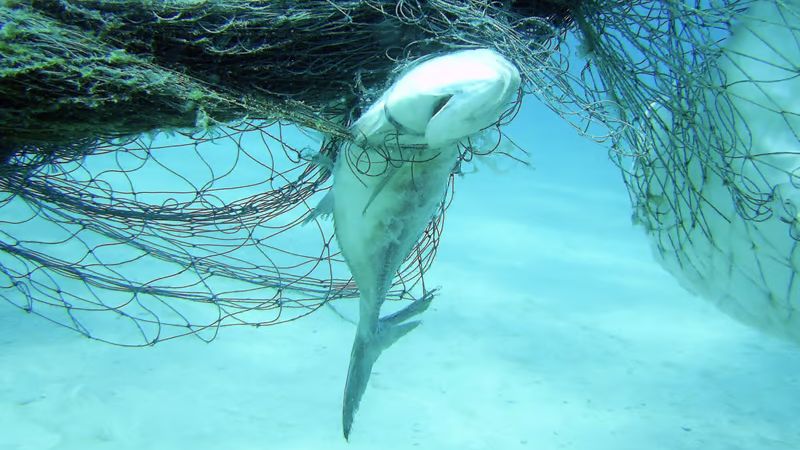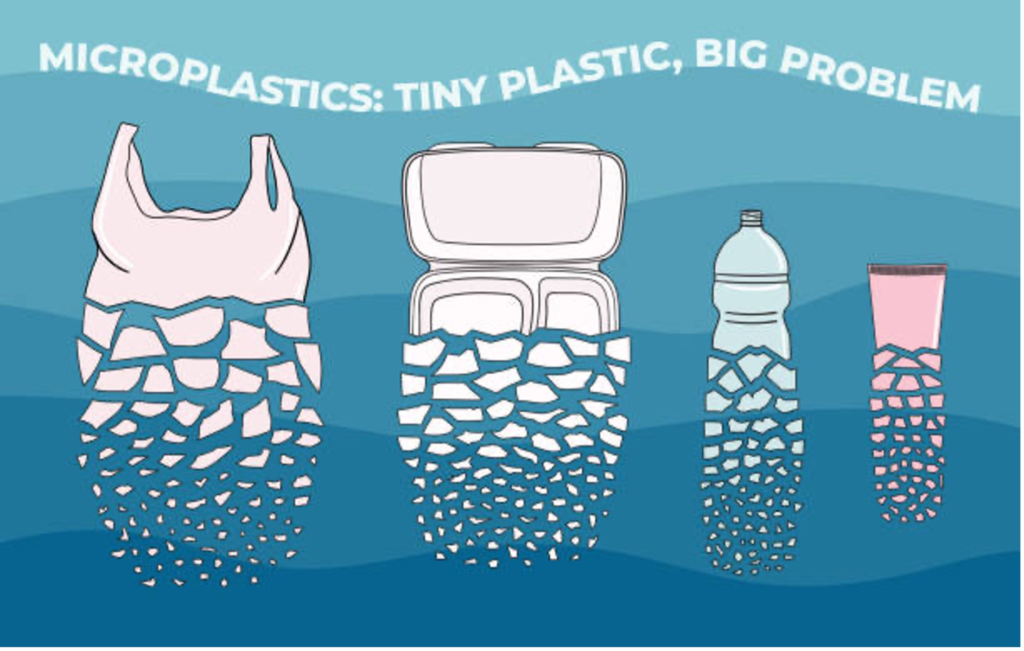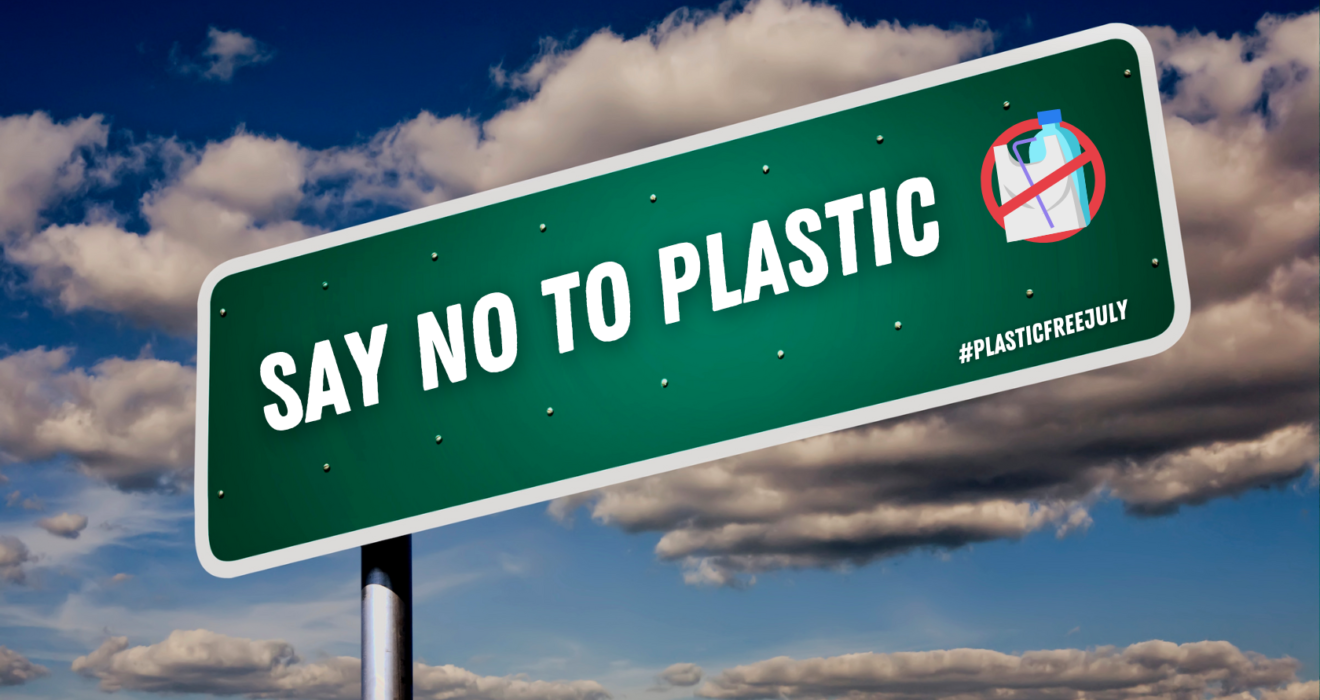July is internationally recognized as the Plastic-free month. This celebration began in 2011, initially led by a small movement in Perth, Australia before it became a global one
The problem of plastic pollution is very much prevalent. Not just on land and in inland water bodies such as rivers but also our oceans. Our oceans are now host to several floating masses of garbage infamously known as the 5 Gyres- one in each. These giant vortices of swirling trash are an assortment of mostly plastic that has eventually made its way to merge due to the ocean currents. The most well-known one is the Great Pacific Garbage Patch, the largest of them all.

In recent years, images and news of helpless marine animals have flooded social media; sea turtles with plastic straws stuck in their throat; sea turtles and whales found beached with plastic bags congesting their stomachs, and more. As a result of the awareness of this dilemma, citizens across the planet united to protect them through a strong plastic-free movement that has gained a lot of attention.
While it may feel like plastic has been around for a long while, it has only been around for a little over a century. More common items like plastic bottles and wrappers have only been around for ~70 years. While its presence in our lives has been taken for granted, its negative effects were not considered until recently. Only when these heart-wrenching images started making their way onto social media did it rally us against the consequences of plastic?
We now also know of a plastic of another kind- Microplastics. While your average plastic waste includes bottles, straws, caps, wrappers, bags, etc. Microplastics are a little different. These are pieces of plastic that are < 5mm in length. They include the little fibers of synthetic threads that come off your clothes when you wash them and enter the sewage system. These also included the micro-beads in cosmetic products until they were banned in many countries. More importantly, they include any larger item of plastic that has eventually broken down into < 5 mm in size.

So what? Plastic can just disintegrate, right? Unfortunately, no. The thing about plastic is that it does not completely degrade into the environment. Plastic pieces only keep getting smaller and smaller. But they never disappear. It is estimated that they truly take around hundreds of years to vanish (2). The first piece of plastic created is probably still around somewhere.
But it is not just our marine friends who are at risk. The effects on the human body are still not fully understood and has only just started being studied. Scientists have been analyzing the presence of microplastics in the water we drink to even the possible uptake of microplastic along with soil nutrients by crops.
A 2018 study found the presence of microplastics in >90% of samples from bottled water brands such as Nestle, Bisleri, and Aqua (3). Another recent study was trying to understand the presence of microplastics in soil and its effect on crop growth (4). The full extent of the latter is still being looked into.
Although India has traditionally been more on the sustainable side (see our 20 Ways India Inspires Sustainability video here), with improving lifestyle conditions there has naturally been a surge in the amount of waste we produce. It is nowhere near Western levels; India produces an average of 0.5 kg of waste per capita per day as compared to 2.2 kg in the US. Nevertheless, images of India’s rivers, heritage sites, tourist spots, and city streets littered with plastic leave no doubt that it is not just a Western issue.
Now we are stuck with a plastic problem. Governments from the city level to states in India and abroad are coming up with ways to deal with all this plastic. Measures include general bans and extensive recycling measures. But to reduce our plastic use we need to adopt more ways to switch it out of our lives.
Here are a few ways (some nature-based) you can keep up a Plastic-free lifestyle even after July is long gone, no matter where you live:
Plastic-free shopping: Although plastic-bag bans prevail in many places across India and are being implemented more globally, it is still an issue. Reusable carry bags made from sustainable materials like jute are a great sustainable way to replace flimsy plastic ones simply because of their reusability. With issues in the cotton industry such as its water usage, studies vary on the number of times organic and non-organic cotton bags have to be reused before they don’t have negative environment impacts.
The good news is that most of us already have these reusable bags somewhere in our houses. So instead of having to buy a new one and worrying about what material to select, it would be a great time to locate and secure it for future uses.
Say no to takeout: One easy way to lessen plastic waste (and the strain on your wallet) is by reducing takeout orders and instead opting for more home cooked meals when possible. Plus, scientists have warned against the health dangers of hot takeout food that comes delivered in plastic- with the potential to leach chemicals like phthalates into the food. Studies have shown that this can affect not just fertility but also metabolic disorders (5).
Avoid fast fashion: Although not really plastic in its true essence, this tip refers to the microfibers that come off when we wash synthetic clothes. These are the clothes made of polyester, nylon etc, a common sight in store racks today. Not only are they made from artificial fibres, these clothes are not designed to last long, hence the term fast-fashion. In many cases, fast fashion industries also unethically treat their workers.
Every time these clothes are washed, they release microfibres into our sewers, then rivers and eventually in the oceans. Instead of choosing clothes designed to last only a few wears or wash cycles, opting for carefully and ethically crafted clothes from natural fibres designed to last years is a great option when looking into an eco-conscious lifestyle. If you’re wondering what to do with the synthetic clothes you already have and wear: washing them less frequently and using the cold-water setting (on a washing machine) is a great place to start.

Bamboo toothbrushes: Most of us know the golden rule of changing toothbrushes every 3-4 months. When we do the math, it easily adds up to ~250-300 toothbrushes over one person’s lifetime. Bamboo toothbrushes are becoming easier to find in stores, becoming more price competitive and are biodegradable and/or plant-based. It is however important to keep an eye out for what the bristles are made of as they may be bamboo-based, animal-based or even synthetic like nylon depending on the brand.

We cannot tackle the plethora of plastic pollution with technological innovations alone. Many of these solutions only address dealing with plastic at the end of its life cycle. Furthermore, only a small fraction of all plastic waste can be recycled. Not to mention that the recycling capacities (or lack thereof) vary across countries as evident in the image below.

A combination of both tactics is needed and not all places will be able to adopt the same measures. For example, banning single-use straws, the movement that started it all in the US, might not have as much relevance in India since the culture of using straws isn’t too prevalent. The key lies in simultaneously reducing our overall dependence and use of plastic as well so that we ultimately eliminate the amount of plastic waste that is eventually discarded. The good news is that as more people realise this, many manufacturers are listening to consumers and developing plastic-free alternatives to make the transition easier.
References:
1. Plastic-free July (Plastic Pollution Coalition)
2. Lifecycle of Plastics (WWF Australia)
3. Study Finds Microplastic in 93% of Bottled Water (Forbes)
4. How Are Microplastics Changing Agricultural Crops? (Forbes)
5. Is plastic a threat to your health? (Harvard Health)




